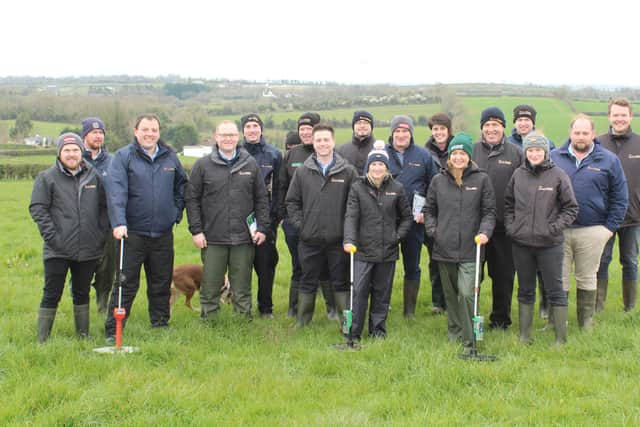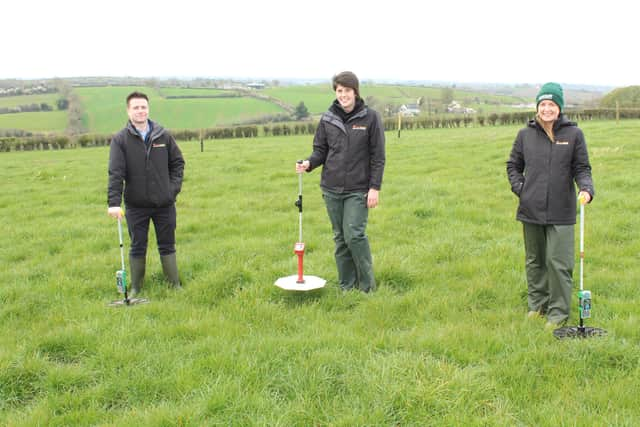More milk from grazed grass – it’s not just a pipe dream
and live on Freeview channel 276
This was one of the key, take-home messages that emanated from a recent ‘grazing advisory workshop’, hosted by United Feeds’ for their team of advisors.
The other overarching theme coming out of the event was the need for dairy farmers to be as accurate and focussed on the way they manage grazed grass as is already the case with making grass silages.
Advertisement
Advertisement
Antrim-based Alan Boyd takes up the story: “Farmers know that they can achieve 12kg plus of silage dry matter intake within their cow’s winter rations.


“The reality is that it is possible to get up to 16kg of dry matter intakes from grazed grass, for example, at the beginning of May, when grass is at its optimal cover and quality.
“Under such circumstances, this should supply a cow with energy to support maintenance plus 22L of milk production.
“This is the theory. But to achieve this level of output requires so many other factors to be aligned. Chief among these is cow stocking rate and the actual amount of grass that is available per cow.”
Advertisement
Advertisement
Making all this happen requires the farmers to know how much grass is available across the entire grazing area.


“There are several ways to measure grass availability. One is to walk the grazing area on a regular basis and visually assess covers, another is to use a quadrant and to physically cut, weigh and calculate grass cover in a set square in each paddock.
“The most accurate way of determining grass availability is to use a plate meter.”
But, according to Alan, the one way not to attempt measuring grass availability is from the car seat while driving past the grazing area or by looking over the gate.
Advertisement
Advertisement
“Physically walking the grazing area is the entry level commitment when it comes to assessing grass availability,” he stressed.
In the early spring months this should be carried out once a week. But as the period of peak growth approaches, this period should be reduced to every five days
The United Feeds team discussed at length the benefits of using a plate metre and also an accompanying software package.
The benefit of this approach in predicting grass availability across a farm, in tandem with the predictions published weekly courtesy of GrassCheck, was highlighted. Armed with this information, the farmer can more accurately predict which paddocks are surplus to herd grass demand and can be taken out for silage.
Advertisement
Advertisement
Another benefit identified for the plate meter and accompanying computer analysis packages was the fact that the farmer will amass a complete production profile of specific fields and paddocks over a complete grazing season.
In turn, this allows for the more accurate identification of areas within the farm that need to be re-seeded.
There was also recognition within the United Feeds’ team that an improvement in the grazing infrastructure across a farm will significantly boost grass utilisation levels.
While not every farm has the advantage of having the yard and milking parlour in the exact centre of the grazing area, investing in better road networks and improved drinking water availability will improve grass utilisation levels within every business.
Advertisement
Advertisement
The growing link between silage making and grazed grass management was also identified. A case in point is the utilisation of a contractor to cut and ensile surplus grass paddocks while he is also ensiling a main crop. This can reduce the additional expense of producing bales from that surplus grass and has greater resonance the more frequent the number of main silage cuts that are taken during a season.
The only additional requirement on the farmer is that of measuring the covers on all the grazing paddocks and balancing this against the requirement for the next rotation before the contractor arrives.
Alan continued: “The three fundamental principles associated with best grazing practice are: building the required wedge across a grazing platform; knowing how much grass is available in each paddock or field as the season progresses and grazing grass when it will deliver the optimal level of performance.
“For dairy farmers, committing to get cows out as early in the season as possible is important to form a grass wedge.
Advertisement
Advertisement
“So, it’s a case of identifying the driest paddocks and getting these utilised at the outset.
“Letting grazed grass get ahead of stock, particularly early in the season, will lead to significant fall-offs in grass quality and forage utilisation.”
“Even with increased fertiliser costs grass remains the cheapest source of feed available to every livestock farmer,” he further explained.
“Now is the time to get grazing and to make best use of the high-quality grass growing on all our farms, but this can only be done through careful management of grass swards and grazing covers. However, you can’t manage what you don’t measure, therefore it is vital that every farmer takes the time regularly to walk and measure their grazing platform, to allow them to maximise their production from grazed grass.”
Advertisement
Advertisement
United Feeds’ team of advisors are trained and available to offer grazing management advice and support to farmers this spring. Contact your local United Feeds representative or visit www.ufeeds.com for more information.